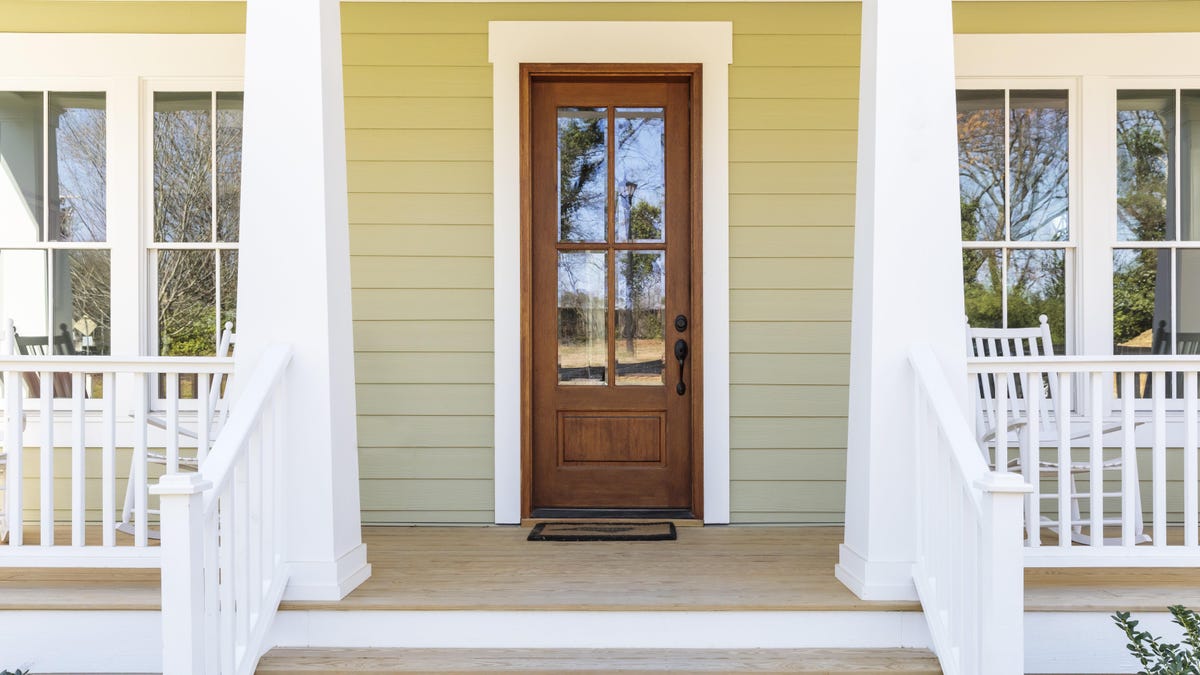Prepare Your Porch for Winter Now
Adding some fresh paint to your porch or deck is a good way to refresh your outdoor space and make it more inviting. But paint does more than just add color—it also acts as a barrier for moisture and...

Adding some fresh paint to your porch or deck is a good way to refresh your outdoor space and make it more inviting. But paint does more than just add color—it also acts as a barrier for moisture and to guard against damage from freezing and rot. Planning ahead now, while the weather is warm and dry–the ideal conditions for exterior painting–can save money on more expensive maintenance later on.
Tools and materials
For this project, you’ll need:
Pressure washerSandpaperPaint scraperPrimerPaintBrushes and roller kitInspect your porch for damage
First, inspect the surface of your porch paint. If you have any cracks, peeling, or bubbling in the paint, it’s definitely time for some maintenance. Some often-overlooked areas are underneath the bottom of your porch railing, the undersides of exposed steps, and any other nooks and crannies that might trap moisture. Other things to look out for are any signs that the wood underneath is damaged. Aside from splintering, any soft spots in the boards or railings of your porch are a sign that you need some maintenance.
Prepare your surface
Before you repaint, you should prep the surface of your porch. This can be accomplished by a strong pressure wash, sanding, and scraping to remove any loose bits of old paint and smooth the surface for a new coat. While you’re prepping the surface, you should look for any damaged parts. If you have a board that’s cracked, any loose parts, or splintering anywhere, you should replace the broken parts before painting. If there’s more extensive damage to the structure of the porch like the legs holding it up, the footings that attach it to the ground, or the stringers that support the planks of the floor, you should have a professional repair it before proceeding.
Check the forecast
Applying paint will work best if you have two to three days of dry weather to allow it to dry well before it gets rained on. Also, paint can bubble in temperatures above 85 degrees Fahrenheit, so keep that in mind when you’re checking the forecast. Conversely, paint can take much longer to dry if temperatures are below 40 degrees Fahrenheit. That’s why painting in late summer or early fall is ideal. In hotter climates, it’s a good idea to use a specialty paint made to resist heat and damage from the sun. In places with high humidity, you can use a specialty additive that helps prevent mold and mildew.
Apply your primer
Once the surface is prepped and you’ve taken care of any damage, you’re ready to start with your primer. Using an exterior primer, begin by painting hard-to- reach spots like under the porch railing, around the columns, and the rafters and ceiling. Even if you can’t see a surface, it’s important to get a coat of paint on anything that part that’s exposed to prevent rot or splitting over the winter. Once you’ve done all of your brush work, use the roller to tackle the floor and stair treads. Allow your primer to dry thoroughly before moving on to your paint color or colors.
Apply your top coat
Brush your topcoat of paint onto the railings and any other smaller parts of your porch. Then you should use a roller to paint the floor. Keep in mind that if you’re using a color that’s different from the primer color, you might need to do two coats to get an even color. Once the surface has been coated, allow it to dry for 24 hours before walking on it so that you won’t get any defects from shoe prints. Once your porch is dry, give it a once-over for any spots you might have missed to make sure you got a good seal.

 Troov
Troov 






























